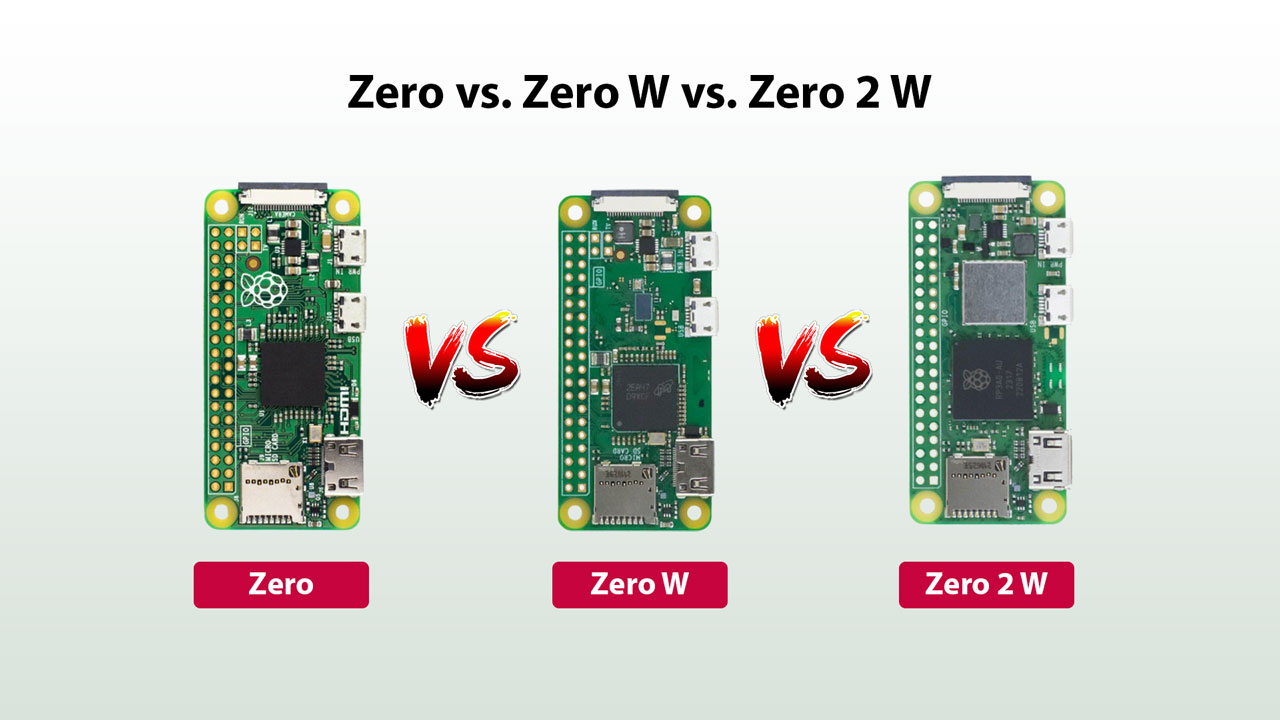No products in the cart.

In the world of single-board computers, the Raspberry Pi Zero series has gained immense popularity for its compact size and affordability. In this article, we’ll explore the key differences between the Raspberry Pi Zero, Zero W, and the latest addition, Zero 2 W, helping you make an informed decision for your projects.
1. Raspberry Pi Zero: Compact Performance
The original Raspberry Pi Zero sets the foundation for the series. Boasting a single-core CPU running at 1 GHz and 512MB of RAM, it’s a pocket-sized powerhouse. However, it lacks built-in wireless connectivity, making it ideal for projects where wired connections suffice.
2. Raspberry Pi Zero W: Adding Wireless Brilliance
Enter the Raspberry Pi Zero W, where the “W” stands for wireless. This variant addresses the connectivity limitations of its predecessor by incorporating both Wi-Fi (802.11n) and Bluetooth 4.0. Whether you’re working on IoT projects or simply prefer the convenience of wireless communication, the Zero W is a step up.
3. Raspberry Pi Zero 2 W: A Quantum Leap in Power
The latest iteration, Raspberry Pi Zero 2 W, takes the series to new heights. Featuring a quad-core ARM Cortex-A53 CPU running at 1 GHz and 512MB of RAM, this tiny board delivers enhanced processing power. Dual-band Wi-Fi (2.4 GHz and 5 GHz) and Bluetooth 5.0 further elevate its connectivity options, making it a compelling choice for more demanding applications.
Here’s a side-by-side table comparison of the Raspberry Pi Zero, Zero W, and Zero 2 W:
| Feature | Raspberry Pi Zero | Raspberry Pi Zero W | Raspberry Pi Zero 2 W |
|---|---|---|---|
| CPU | 1 GHz Single-core | 1 GHz Single-core | 1 GHz Quad-core ARM Cortex-A53 |
| RAM | 512MB | 512MB | 512MB |
| Wireless Connectivity | None | Wi-Fi (802.11n), Bluetooth 4.0 | Wi-Fi Dual-Band (2.4 GHz and 5 GHz), Bluetooth 5.0 |
| HDMI Ports | Mini-HDMI | Mini-HDMI | Mini-HDMI |
| USB Ports | 1 x micro-USB OTG | 1 x micro-USB OTG | 1 x micro-USB OTG, 1 x USB-C (Power) |
| GPIO Pins | 40-pin GPIO header | 40-pin GPIO header | 40-pin GPIO header |
Choosing the Right Pi for Your Project
When selecting a Raspberry Pi Zero model, consider the specific requirements of your project. If compact performance without the need for wireless connectivity suffices, the Raspberry Pi Zero is a reliable choice. For wireless capabilities, the Zero W steps in seamlessly. However, if you crave more processing power and advanced connectivity options, the Zero 2 W stands out as the top contender.
Conclusion: Evolving Possibilities with Raspberry Pi Zero Series
Whether you’re a hobbyist, student, or professional, the Raspberry Pi Zero series opens up a world of possibilities. From the original Zero’s compact performance to the wireless convenience of the Zero W and the powerhouse capabilities of the Zero 2 W, each iteration caters to unique project requirements. Stay tuned for more innovations as the Raspberry Pi ecosystem continues to evolve, empowering creators worldwide.

